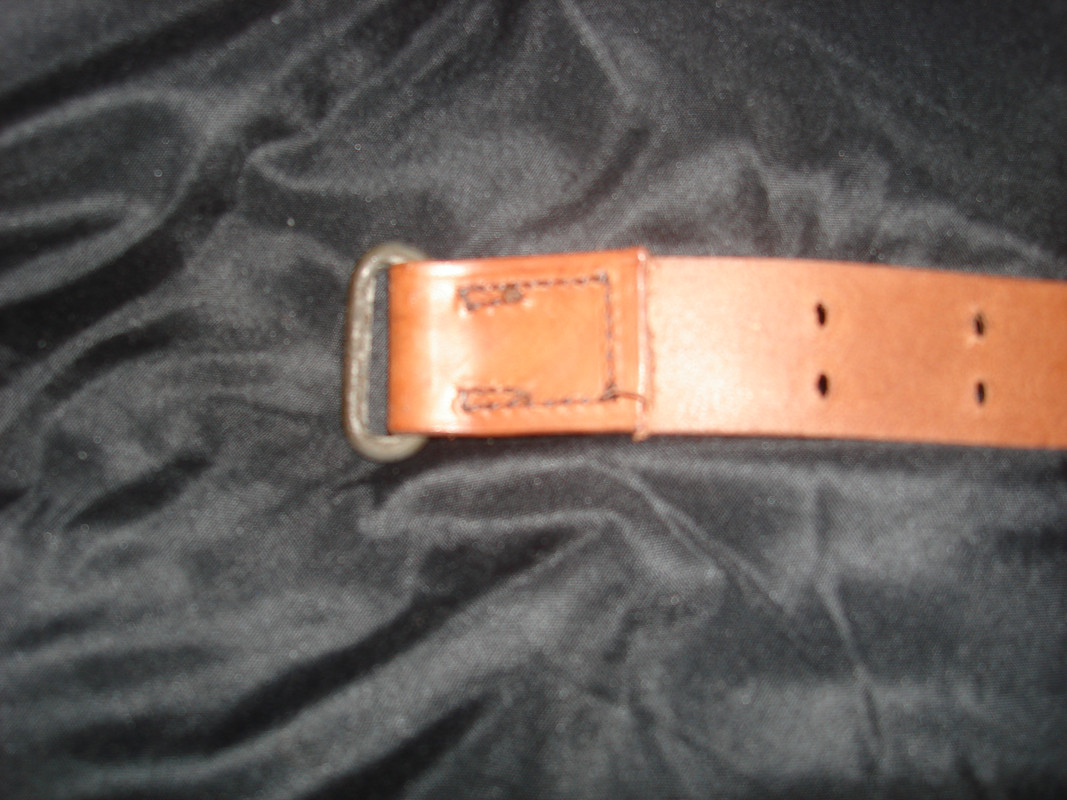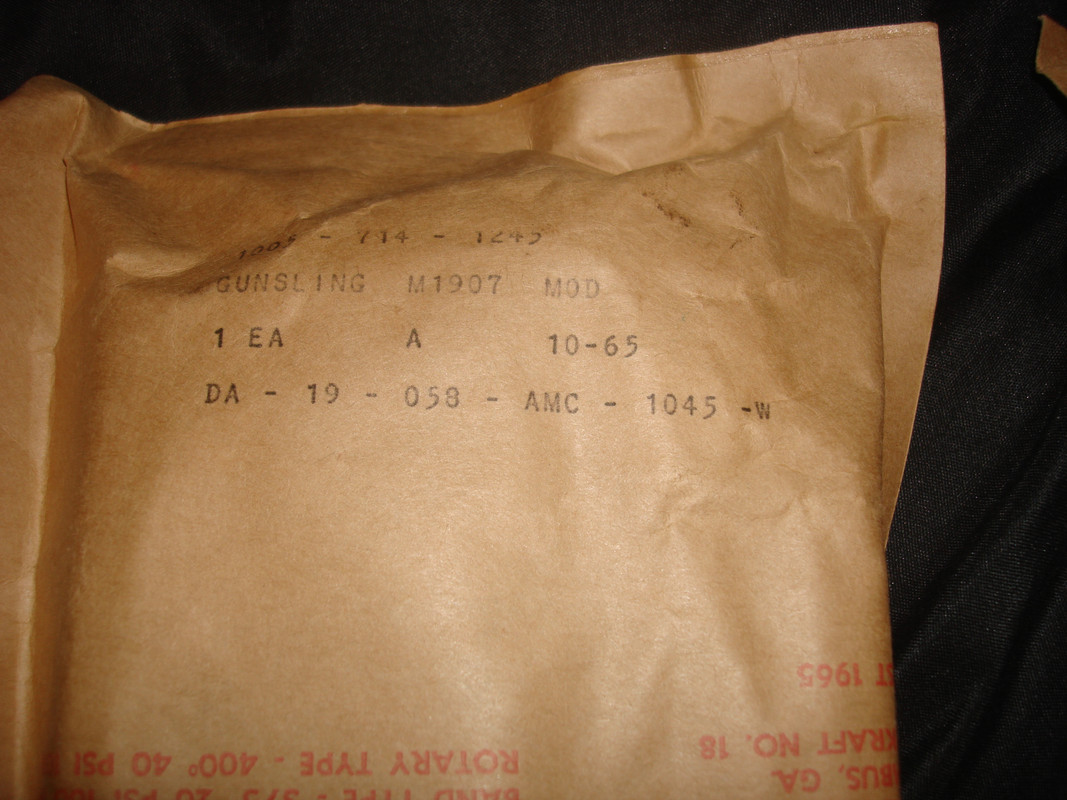I have been looking for a correct sling to go with my new build, 1963 SA NM. I think I may have found a mid sixties USGI match sling on Ebay of all places. I probably paid a little too much but sometimes you have to take a chance and pay to play. NOTE: there are no MRT or date markings on the sling itself only the bag.
The first photos are from one that was posted on the Milsurps.com forum a few years back (2014). I also provided the link to the forum post. It was the opinion of one individual that this was in fact a USGI match sling.
I also provided the link to the Ebay listing showing what was purchased. Although the writing on the bag is degraded in places I believe there is enough still showing to validate that these two slings are from the same contractor and time period. I would like to query this forum for opinions.
1907 Sling Question
![454392 454392]()
![454393 454393]()
![454394 454394]()
![454395 454395]()
Here is the link to the Ebay posting to compare to the photos.
![www.ebay.com www.ebay.com]()
US M1907 Leather Sling, Vietnam War-era, National Match, Garand , Unissued! | eBay
New, out of the bag, M1907 US Vietnam War era Leather sling. Used on the Garand, Hard to find!
www.ebay.com
The first photos are from one that was posted on the Milsurps.com forum a few years back (2014). I also provided the link to the forum post. It was the opinion of one individual that this was in fact a USGI match sling.
I also provided the link to the Ebay listing showing what was purchased. Although the writing on the bag is degraded in places I believe there is enough still showing to validate that these two slings are from the same contractor and time period. I would like to query this forum for opinions.
1907 Sling Question




Here is the link to the Ebay posting to compare to the photos.

US M1907 Leather Sling, Vietnam War-era, National Match, Garand , Unissued! | eBay
New, out of the bag, M1907 US Vietnam War era Leather sling. Used on the Garand, Hard to find!
www.ebay.com
















